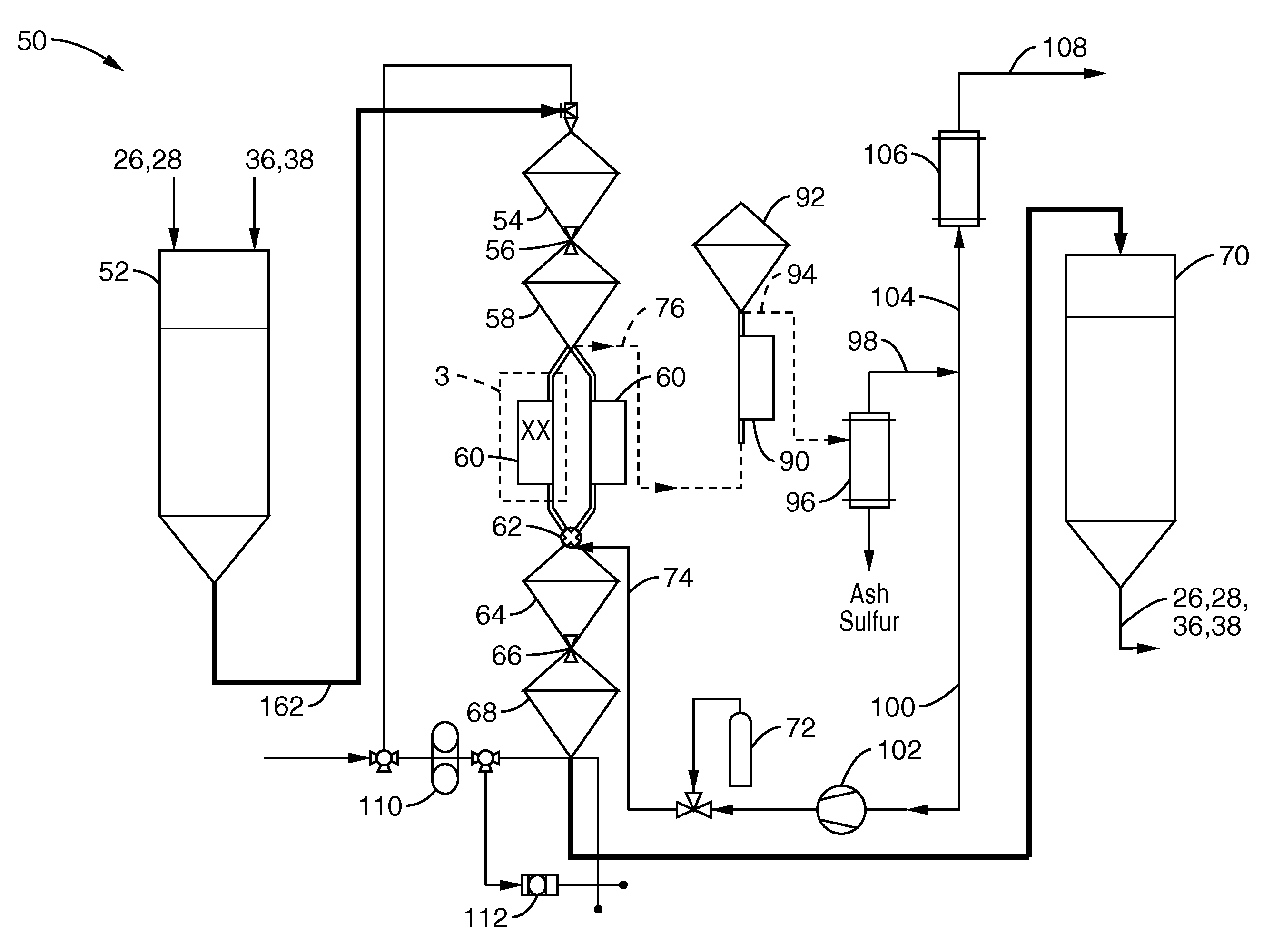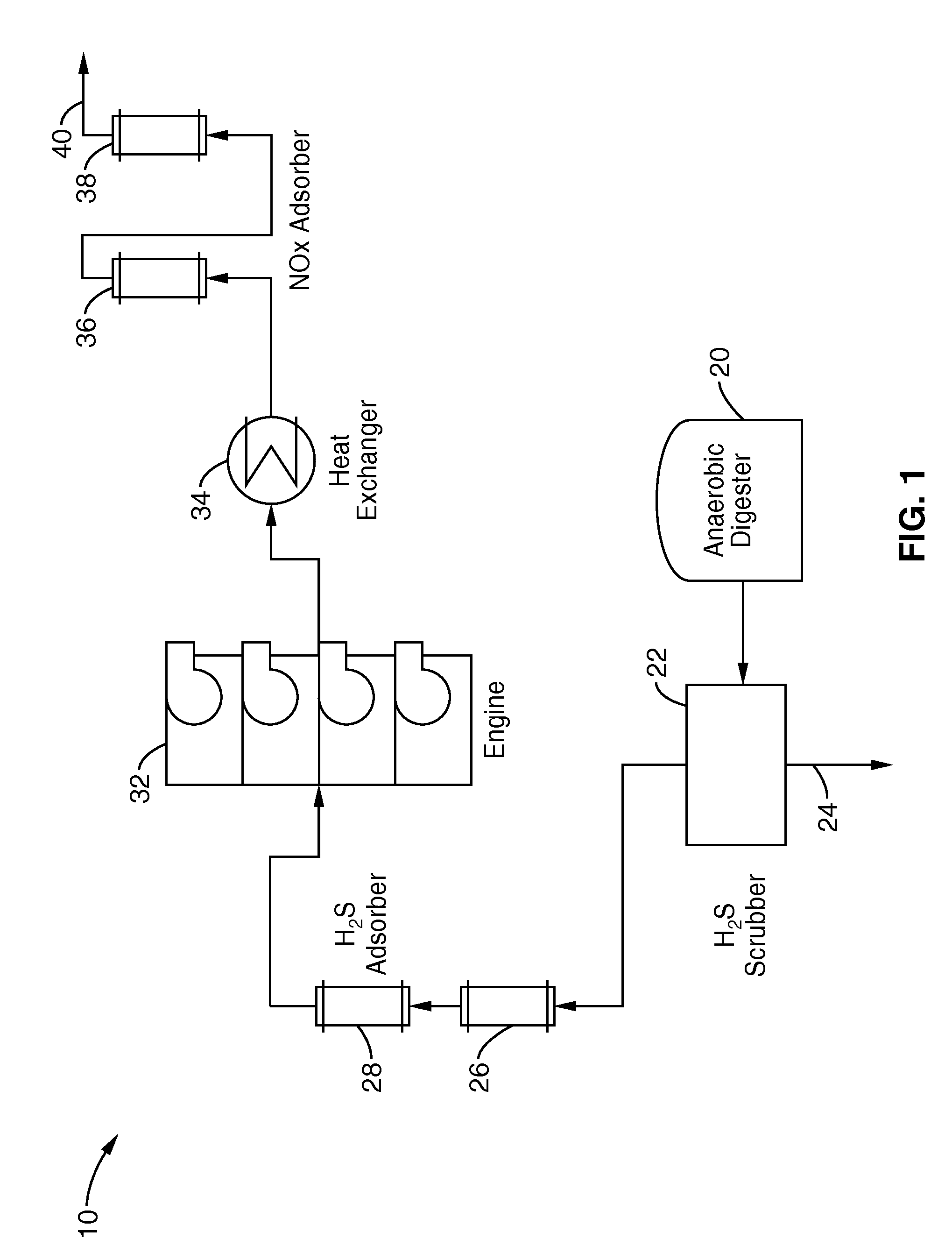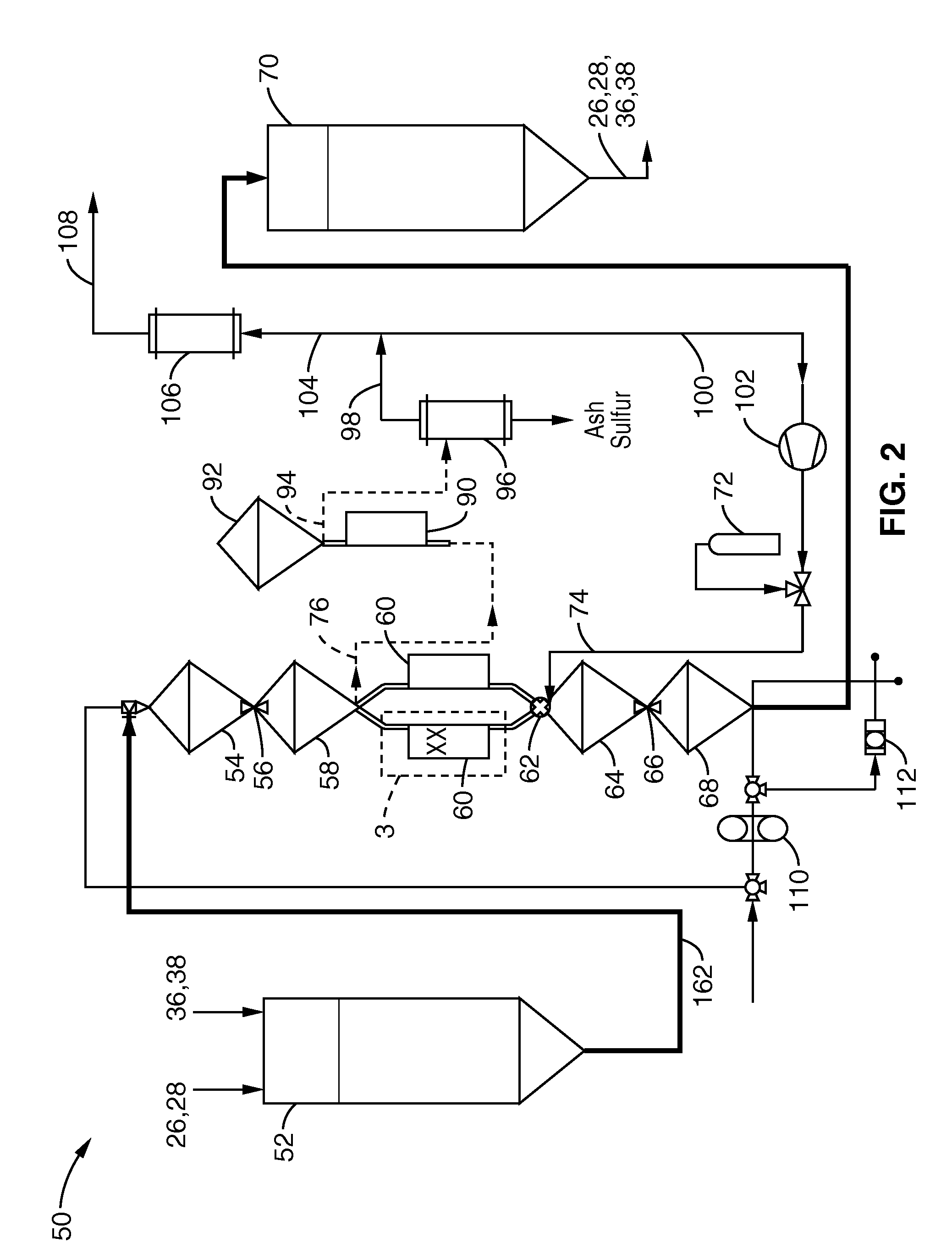Microwave induced destruction of impurities from biogas and nitrogen oxides from engine exhaust
a technology of biogas and nitrogen oxides, which is applied in the direction of energy-based chemical/physical/physico-chemical processes, biomass after-treatment, and separation processes, etc., can solve the problems of limited ability to fully develop these resources, significant equipment operation and maintenance problems, and restrict power equipment options almost exclusively
- Summary
- Abstract
- Description
- Claims
- Application Information
AI Technical Summary
Benefits of technology
Problems solved by technology
Method used
Image
Examples
Embodiment Construction
[0059]Referring more specifically to the drawings, for illustrative purposes the present invention is embodied in the apparatus generally shown in FIG. 1 through FIG. 3. It will be appreciated that the apparatus may vary as to configuration and as to details of the parts, and that the method may vary as to the specific steps and sequence, without departing from the basic concepts as disclosed herein.
[0060]FIG. 1 is a schematic process diagram of a process 10 for removal of contaminants from the biogas fuel and from the exhaust of the engine running on the biogas. The process takes advantage of the fact that H2S adsorption capacity of GAC is very close to NOx adsorption capacity. Biogas is generated in an anaerobic animal waste digester 20. Note that the present invention is also applicable to biogas produced in landfills, waster water digesters, and food digesters.
[0061]For biogases containing H2S concentration greater than 1,000-ppm, an iron sponge, bioreactor, or other commerciall...
PUM
 Login to View More
Login to View More Abstract
Description
Claims
Application Information
 Login to View More
Login to View More - R&D
- Intellectual Property
- Life Sciences
- Materials
- Tech Scout
- Unparalleled Data Quality
- Higher Quality Content
- 60% Fewer Hallucinations
Browse by: Latest US Patents, China's latest patents, Technical Efficacy Thesaurus, Application Domain, Technology Topic, Popular Technical Reports.
© 2025 PatSnap. All rights reserved.Legal|Privacy policy|Modern Slavery Act Transparency Statement|Sitemap|About US| Contact US: help@patsnap.com



